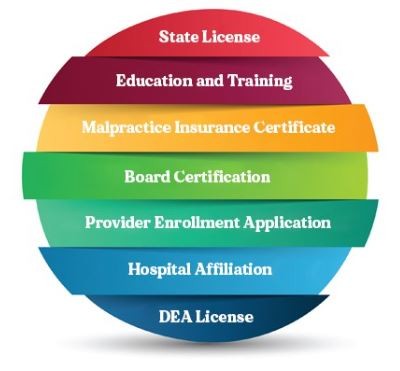What is Provider Credentialing?
When patients visit a healthcare facility, they trust they’re receiving care from qualified professionals. Provider credentialing is the systematic process healthcare organizations use to verify and assess the qualifications, competencies, and professional backgrounds of medical providers. This involves reviewing education, training, licenses, certifications, work history, malpractice records, and references to ensure providers are competent, credible, and safe to deliver care.
By thoroughly validating providers’ credentials, healthcare organizations maintain a network of qualified professionals, upholding high standards of care and prioritizing patient safety. Below, we explore the key aspects of provider credentialing, its significance, and how organizations can optimize this essential process.
How Does Provider Credentialing Work?
- Application Review: Providers submit documents, including transcripts, licenses, and references.
- Primary Source Verification: Educational institutions, licensing boards, and other authorities are contacted to confirm credentials.
- Background Checks: Criminal records, malpractice history, and work experience are reviewed for compliance and safety.

Once all data is validated, the provider may receive privileges to practice. Credentialing isn’t a one-time event—it must be regularly updated to comply with ongoing regulatory standards.



